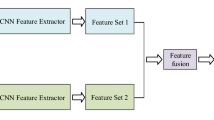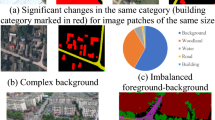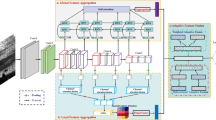Abstract
The widespread use of remote sensing (RS) aerial images in scene categorization has drawn the attention of numerous researchers. As the consequence of this advancement, the approaches for RS image scene categorization that use convolutional neural networks (CNNs), have progressed enormously. Majority of the layouts in the works already published only took the account of scene's global information. However, a lot of replicated areas in the global information reduce the effectiveness of classification and disregard local contextual details, which reflect finer spatial characteristics of local objects. Additionally, the majority of CNN-based approaches give the identical weights on each feature vector, which prevents the mode from differentiating the important features. To overcome the above limitations, we propose a model called enhanced feature fusion from dual attention paths using feature gating mechanism (EFFDA-FG). This model employs Resnext50 baseline model, with channel spatial attention for deriving global and local features along with feature fusion using a gating mechanism. Our suggested model was implemented on three well-known datasets and it proves to give accuracy equal to or higher than that of many state-of-art CNN architectures while using comparatively lesser parameters.
Access this chapter
Tax calculation will be finalised at checkout
Purchases are for personal use only
Similar content being viewed by others
References
Chen S, Ma W, Sun C, Chen S (2021) A comprehensive survey of remote sensing image scene classification: perspectives, datasets, and future directions. Remote Sens 13(12):2316
Zhou Z, Wang Y, Fu P, Liu L (2021) Feature learning and representation for remote sensing image scene classification: a comprehensive review. IEEE Trans Geosci Remote Sens 59(2):1011–1030
Dosovitskiy A, Beyer L, Kolesnikov A, Weissenborn D, Zhai X, Unterthiner T, Brox T (2021) An image is worth 16 × 16 words: Transformers for image recognition at scale. In: International conference on learning representations (ICLR)
Bazi Y, Bashmal L, Al Rahhal MM, Al Dayil R, Al AN (2021) Vision transformers for remote sensing image classification. Remote Sens 13(3):516
Roy SK, Deria A, Hong D, Rasti B, Plaza A, Chanussot J (2023) Multimodal fusion transformer for remote sensing ımage classification. IEEE Trans Geosci Remote Sens 61(1–20)
Castelluccio M, Poggi G, Sansone C, Verdoliva L (2015) Land use classification in remote sensing images by convolutional neural networks. arXiv:1508.00092
Li E, Xia J, Du P, Lin C, Samat A (2017) Integrating multilayer features of convolutional neural networks for remote sensing scene classification. IEEE Trans Geosci Remote Sens 55(10):5653–5665
Bi Q, Qin K, Zhang H, Xia G-S (2021) Local semantic enhanced ConvNet for aerial scene recognition. IEEE Trans Image Process 30:6498–6511. https://doi.org/10.1109/TIP.2021.3092816
Wang X, Duan L, Shi A, Zhou H (2022) Multilevel feature fusion networks with adaptive channel dimensionality reduction for remote sensing scene classification. IEEE Geosci Remote Sens Lett 19:1–5. Art no. 8010205. https://doi.org/10.1109/LGRS.2021.3070016
Li E, Samat A, Du P, Liu W, Hu J (2022) Improved bilinear CNN model for remote sensing scene classification. IEEE Geosci Remote Sens Lett 19:1–5
Xu K, Huang H, Li Y, Shi G (2020) Multilayer feature fusion network for scene classification in remote sensing. IEEE Geosci Remote Sens Lett 17(11):1894–1898
Wang S, Guan Y, Shao L (2020) Multi-granularity canonical appearance pooling for remote sensing scene classification. IEEE Trans Image Process 29:5396–5407
Wang X, Duan L, Ning C, Zhou H (2022) Relation-attention networks for remote sensing scene classification. IEEE J Sel Top Appl Earth Observ Remote Sens 15:422–439
Zhao Z, Li J, Luo Z, Li J, Chen C (2021) Remote sensing image scene classification based on an enhanced attention module. IEEE Geosci Remote Sens Lett 18(11):1926–1930
Chen S-B, Wei Q-S, Wang W-Z, Tang J, Luo B, Wang Z-Y (2022) Remote sensing scene classification via multi-branch local attention network. IEEE Trans Image Process 31:99–109
Yu D, Guo H, Xu Q, Lu J, Zhao C, Lin Y (2020) Hierarchical attention and bilinear fusion for remote sensing image scene classification. IEEE J Sel Top Appl Earth Observations Remote Sens 13:6372–6383. https://doi.org/10.1109/JSTARS.2020.3030257
Woo S, Park J, Lee J-Y, Kweon IS (2018) CBAM: convolutional block attention module. In: Proceedings of the European conference on computer vision. Springer, Munich, pp 3–19
Yang X, Zhou W, He Z, Gao J (2010) Urban land cover classification using integrated remote sensing and GIS techniques: a case study in the Phoenix metropolitan area. Remote Sens Environ 114(8):1833–1848
Xia GS, Hu F, Hu H, Shi X, Bai X, Zhong Y, Zhang L (2017) AID: a benchmark data set for performance evaluation of aerial scene classification. IEEE Trans Geosci Remote Sens 55(7):3965–3981
Cheng G, Han J, Lu X, Zhang C, Sun J (2017) Remote sensing image scene classification: benchmark and state of the art. Proc IEEE 105(10):1865–1883. https://doi.org/10.1109/JPROC.2017.2712042
Selvaraju RR, Cogswell M, Das A, Vedantam R, Parikh D, Batra D (2019) Grad-CAM: Visual explanations from deep networks via gradient-based localization. In: Proceedings of the IEEE ınternational conference on computer vision, pp 618–626
Van der Maaten L, Hinton G (2008) Visualizing data using t-SNE. J Mach Learn Res 9(Nov):2579–2605
Author information
Authors and Affiliations
Corresponding author
Editor information
Editors and Affiliations
Rights and permissions
Copyright information
© 2023 The Author(s), under exclusive license to Springer Nature Singapore Pte Ltd.
About this paper
Cite this paper
Akila, G., Gayathri, R. (2023). Enhanced Feature Fusion from Dual Attention Paths Using Feature Gating Mechanism for Scene Categorization of Aerial Images. In: Shakya, S., Tavares, J.M.R.S., Fernández-Caballero, A., Papakostas, G. (eds) Fourth International Conference on Image Processing and Capsule Networks. ICIPCN 2023. Lecture Notes in Networks and Systems, vol 798. Springer, Singapore. https://doi.org/10.1007/978-981-99-7093-3_38
Download citation
DOI: https://doi.org/10.1007/978-981-99-7093-3_38
Published:
Publisher Name: Springer, Singapore
Print ISBN: 978-981-99-7092-6
Online ISBN: 978-981-99-7093-3
eBook Packages: Intelligent Technologies and RoboticsIntelligent Technologies and Robotics (R0)




